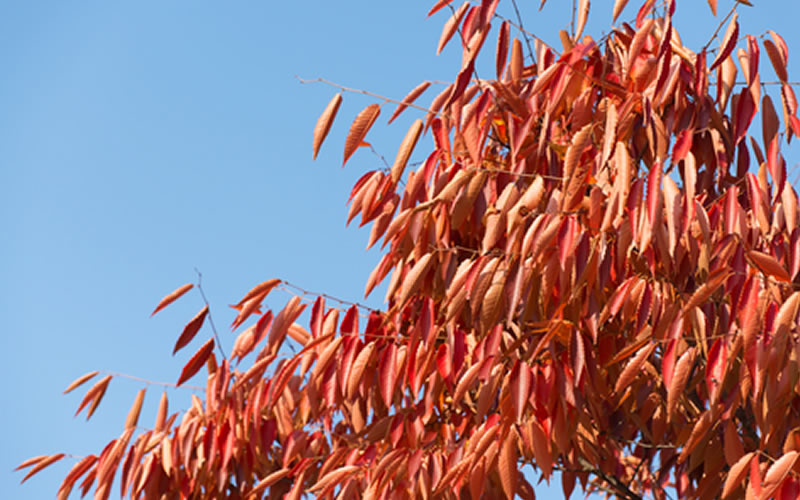The Japanese Zelkova tree (Zelkova Serrata) is a deciduous tree native to Japan, Taiwan, and eastern China. In the US, it has been fast gaining popularity as a replacement for the American elm, which is susceptible to disease. It’s an idyllic tree for both lawns and streets and is also highly drought resistant. It has strong and durable timber, which makes it popular for construction and furniture building in Japan and elsewhere.

Appearance
The Japanese Zelkova has elliptical dark green leaves that turn beautiful shades of yellow, bronze, dark red and even purple in the fall. Its attractive grey bark gives way to impressive mottled-looking orange patches on its trunk. The tree has small yellow-green flowers that give way to tiny wingless drupes that turn brown and ripen in the late summer or fall. It is also commonly used for bonsai because of its attractive shape and colors.
The Zelkova tree grows to 50 – 80 feet in height.
Growth and Environment
The Japanese Zelkova tree does best in full sun or partial shade with rich moist well-drained soil. It is easily transplanted. Once it is established, it is quite drought resistant. It’s also very tolerant of wind and air pollution. This is yet another reason why it is such a reliable choice for the city. It grows in Hardiness Zones 5 to 8.
There are ample varieties or cultivars of Japanese Zelkova. The most popular are Halka, Village Green, Musashino, Wireless, Autumn Glow and the Green Vase.
– Halka is the fastest-growing and largest variety. It is not quite as big as an elm, but very popular because it is the closest in appearance to an elm and alleviates concerns of Dutch Elm Disease. It has a mostly yellow color in the fall.
– The Village Green has a nice reliable wide spread, and needs plenty of room to grow.
– The Musashino is more upright and narrow, turning yellow in the fall.
– The Wireless variety turns red, growths to a lower height and even works well under utility lines.
– The Autumn Glow is a more compact option and turns to reds and/or purples in the fall.
